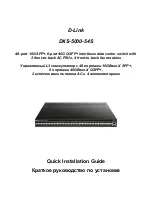
4
4-4
Flash Memory contains all of the 9099's program instructions, command tables,
and power turn-on/self test routines. At power turn-on, the 9099 performs a
self test on each functional block to determine whether there is a gross system
failure. Any self test error is displayed as a pattern of blinking LEDs on the front
panel. The error pattern is repeated until the unit is turned off. The RDY LED
becomes solid on to indicate a successful completion of the self test routine.
The 9099's configuration settings, serial number and other parameters that are
subject to change are saved in a nonvolatile Flash sector. At power on time,
the microprocessor copies the saved configuration to RAM where they is used
to operate the unit. Any changes made to the settings during run time are not
stored in the Flash sector until the user sends the 9099 the *SAV 0 command.
Changes made by a web browser are saved in Flash when the user presses the
Update Flash button.
In the 9099, the RAM is a 32-bit wide memory that is used for running the ac-
tive program, data storage, operating variables and configuration settings. The
9099 data buffers are mechanized as straight buffers because of the Modbus
command-response protocol. The buffers are larger than any anticipated mes-
sage so no data loss ever occurs.
The 9099's power supply is a switching regulator that converts a unregulated
9 to 32 volt DC input to +5 Vdc to run the 9099's internal logic chips. The +5
Vdc is down regulated to make 3.3 and 1.8 Vdc for the ARM processor and the
supporting chips that run on 3.3 Vdc power. A DC-DC charge pump converter
in the RS-232 transceiver IC makes ± 9 Vdc to operate the RS-232 drivers.
4.3
9009 DIFFERENCES
The 9009 is a PC board assembly designed to be mounted against the rear panel
on the inside of the host chassis. The 9009 has two additional interfaces, GPIB
and USB, which can be used to control the Modbus slave devices(s) along with
the 9099’s Ethernet interface. The GPIB interface acts like the VXI-11 protocol
but has the ability to receive a SRQ when a Service request occurs. The USB
interface has similar capabilities to raw socket protocol in that it can send 488.2,
SCPI and Modbus commands and receive the corresponding responses.
4.3.1 9009 block Diagram Description
Figure 4-3 shows a block diagram of the 9009. The 9009 has a similar block
diagram and core components as the 9099 plus the additional GPIB and USB
interfaces.
Summary of Contents for 9099
Page 20: ...1 16 1 Figure 1 1 9009 Outline Dimensions ...
Page 24: ...1 20 1 Figure 1 3 9099 Certificate of Compliance ...
Page 54: ...3 8 3 Figure 3 1 Status Reporting Structure Flash Configuration Reset ...
Page 94: ...3 48 3 This page left intentionally blank ...
Page 100: ...4 4 6 This page is left intentionally blank ...
















































